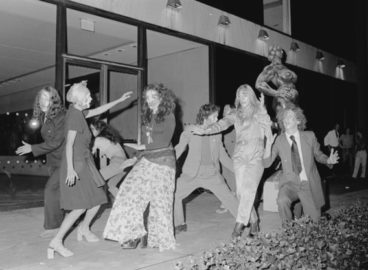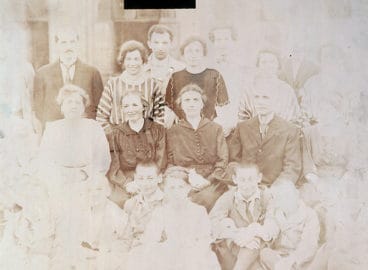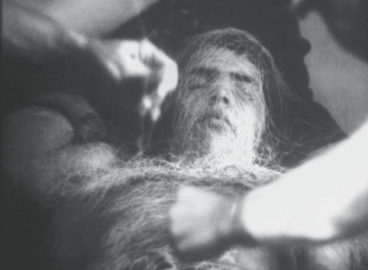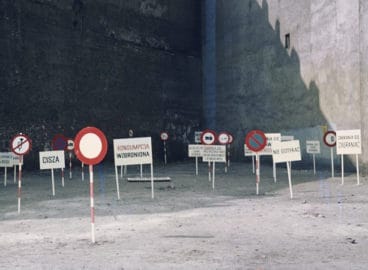Time of Sun
Authors Robert Cyprich
Date 1969
Publication Mladá tvorba
Language Slovak
Dear Sir Dear Madam
We would like to take this opportunity to inform you that on October 19, 1969, the sunrise took place at 6:15 a.m. and the sunset at 4:56 p.m.
Using this as a point of departure, Robert Cyprich and Branka Jančia decided to introduce the “Time of the Sun” in the form of an international exercise.
RUŽOMBEROK
ČSSR
ROBERT & BRANKA
and anonymous participants
CALVARY
LONDON N.7
ENGLAND
EUGEN BRIKCIUS
and anonymous participants
35 TUFNELL PARK ROAD
Together, we aimed to overcome borders, whether constitutional or ideological in this divided world.
We aimed to create a sense of connectedness among strangers, regardless of their gender, race, education, or religion.
We aimed to create a connection to others—whose exposure to the sun varies from ours in terms of time and intensity, and yet it is the experience that we have in common.
The Time and the Sun as symbols of the creation of heat as a fundamental step in the origins of life connected us for one sunny day. And they forced us to think even of those who are the most distant or irrelevant to our world view.
Through measuring the Time of the Sun, we created a new synthesis of compassion and complicity.
The measuring wasn’t carried out by means of exact meridian calculations but rather by means of human relations.
By means of consciously overcoming human indifference.
The action—in the form of a permanent manifesto exercise—was dedicated to the commemoration of the centenary of Mahatma Gandhi’s birth, as a demonstration against the use of physical and psychological violence.
A2
Exercise (script)
Just before sunrise, participants arrive at the site of the exercise (having chosen any flat or slightly uneven terrain, such as a square, a park, or a meadow). In the middle of the site, they raise a three-meter-high pole to serve as the gnomon of a sundial.
They sit next to each other, chatting and waiting until the strike of the pendulum clock (previously carried to the site) announces the first hour after the sunrise.
At the stroke of the hour, one of the participants begins to paint a black line, tracing the entire length of the shadow of the sundial, after which he rejoins the group. Discussion resumes, with the aim of mentally connecting with people in other parts of the world who are, at the same moment, engaged in the same activity, which strives to create an atmosphere of integrity over indifference. The group waits until the stroke of the pendulum clock announces the next hour. This procedure is repeated on the hour every hour until the sun sets; when the sundial is complete, the participants leave.
The sundial’s circular base is not delineated as in a standard clockface. The lines marking each hour correspond to the length of the shadow of the gnomon (longer in the morning and evening and shorter at noon).
If the sky becomes overcast, the exercise is resumed the next day.
The process of painting the gnomon’s shadow on the hour is filmed; one minute of each of the breaks between the hours, when the participants are sitting around, is also filmed.
The final footage of the painting of the sundial’s shadows, cut with one-minute footage of the participants, is given the same title as the exercise itself.
B
Homage to Mahatma GANDHI—nonviolent suffering
We have no right to offend anybody, or to harbor an uncharitable thought, even in relation to someone who we may consider to be an enemy.
The avoidance of physical force overcomes the adversary through self-suffering.
SATYAGRAHA AHIMSA.
C
EUGEN BRIKCIUS: . . . I’M GLAD TO SEE THAT WE ARE OF A SIMILAR OPINION REGARDING THE LAME DISPUTE OVER THE POSITION [OF ART] WITHIN THE AVANT-GARDE. I FOR ONE, HAVE NEVER OPERATED WITHIN TERMS SUCH AS AVANT-GARDE OR EVEN ART AS SUCH. I DID USE (AND I REGRET IT) THE UNFORTUNATE TERM HAPPENING. FOR FUTURE REFERENCE, I DECIDED TO REPLACE IT WITH THE MORE MODEST AND YET MORE APPROPRIATE EXERCISE. THE TROUBLE WITH HAPPENING IS THAT IT MAY SUGGEST MEANINGS (OFTEN MAGICAL) THAT IT DOES NOT POSSESS.
EXERCISE IS NOWHERE NEAR AS POMPOUS.
IT IS NOT OSTENTATIOUSLY ATTRACTIVE AND IT IS SIMPLY FOR THOSE WHO JUST WANT NOTHING MORE THAN AN EXERCISE . . .” 5.5 hours
D1—The final throes of the Happening
The attractive arrival of the year 1900; the explosion of cathexis and catharsis.
Sixty years on—a provisorium with an ostentatious name: 20th century.
As a result of spontaneous Explosionalism and the school of John Cage, a new child of meaningless art and art of meaninglessness was born.
The frustrated contractions and the labor pains were riotous and, in some way, meant more to us than the inanimate child: they created a new analytical condition as the grounds for a NEW SYNTHESIS.
The child did not survive, and to engage in endless arguments about its significance is today pointless.
The Happening, the final cry of the 20th century, has in its magical form passed away, together with the 20th century.
D2—Confrontation as a new form of communication
The understanding of reality has changed; the human has changed.
Their communication has changed; we broke away from the myth of the material objects of art and replaced it with mixed-media AUTO-MASTURBATION of the PSYCHE. We fled the gallery but we couldn’t find our place in society.
We still lamely ponder ordinary things and we loudly boast about all the things that escaped us while we were idle in the studio.
Finally it’s time to stop with this messianic egoism. It’s time to find one’s place on the street, a place within the fundamental facts of utterances. Art has paid the price for being revolutionary—it has negated itself.
D3—Pierre Restany and the sociological world of art
The urban landscape has become a new gallery.
Social structuralism has become the new matter: a new form for intermedia is being sought—Nouveau Réalisme and Environments suggest a new channel for entering society. The most optimal spatial urbanism is NEOGOTHIC and ANONYMOUS.
Ben slowly lost the revolutionary glow of the “Little Lenin.” The artists entered the laboratory, and computer art gave them the opportunity to dabble with computers, generators, and synthetic materials; however, the synthesis has not materialized and the manipulation of the bourgeois stereotype is increasing. The homo ludens is the only one who triumphs. Noci publishes Restany’s “red” and “white” book and this year’s “anti-book”; the situation is now clearer: the chaos of elementarism can be solved.
D4—the artist as a sociological, “aesthetic” element
The artist—still without a defined function—has found his place in life: he builds henhouses from 300 cubic meters of air, and with one nail, he frames nature but does not aim to change the concept of it. There is yet more revolutionary trumpeting, but without the arrival of the complex individual: homo faber + homo ludens.
D5—synthology and objecthics
Lawrence Weiner has finally been acknowledged as the greatest artist of our time, marking the emergence of a cybernetic human model of Restany for the 21st century.
With the new material, a new medium can emerge: synthology, i.e., creativity interpreted as a total synthesis of science and art. As a new synthetic activator of the subject, following the last interjection of Mlynárčik’s May manifesto from the Sorbonne, what we finally have here is a new synthetising object ethics of the cathedral of humanism: objecthics.
D6—The spatial project of society
We are at one with society and have become the same as it is: audio/visual/spatial. Collective anonymity: the Ensemble comp. The project is in its development phase.

Translated by Zuzana Flaskova.



